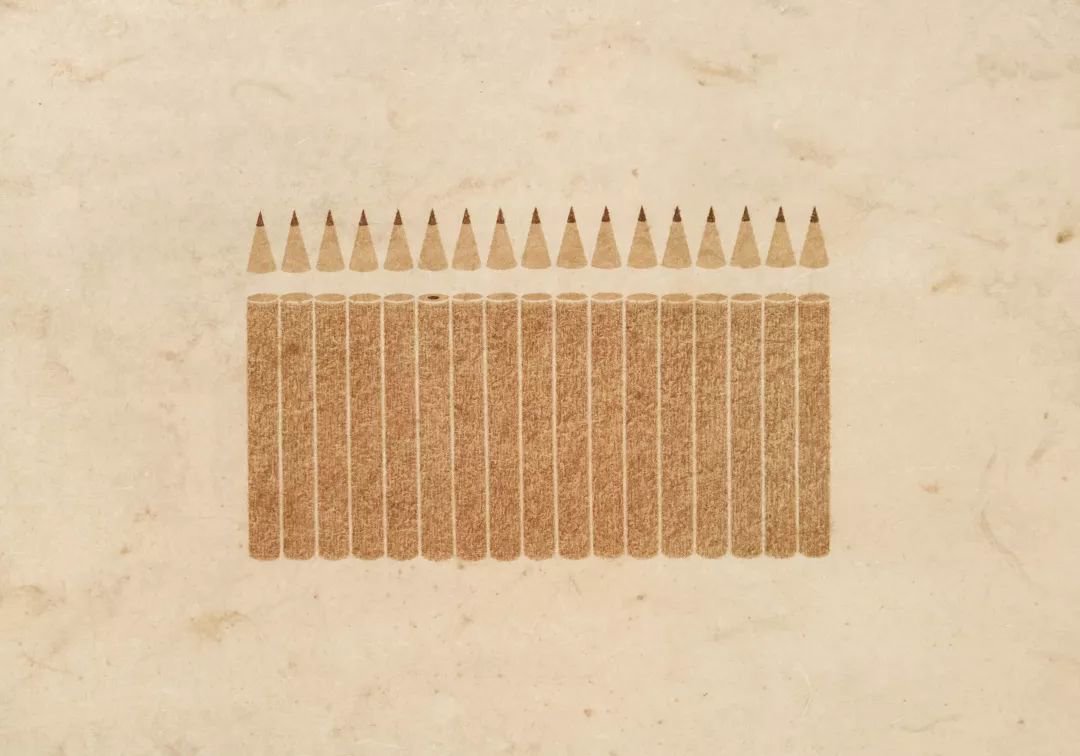
1. Start with the problem
Text/Lu Zhixuan
Common pen-holding errors (1): Hold the pen in a low position
Holding the pen in a low position directly affects the sitting posture. This error causes the thumb to block the line of sight, causing problems such as tilting the head. In the past, we talked about "one inch, one punch, one foot", where one inch (approximately equal to 3.3 centimeters) refers to the height of holding the pen, but this expression is not necessarily accurate and intuitive. If a child holds a pen at a height of one inch, it is undoubtedly too high. The pen holding height advocated by Hao Kuai Calligraphy is "one and a half fingers" - a section and a half distance from the fingertip to the index finger. The way to check whether the pen holding height is appropriate is: hold the pen in your right hand, with the pen tip facing the 9 o'clock direction, put the index finger of your left hand straight on the back of the pen, and the distance between the pen tip and the index finger tip is "one and a half fingers". That is suitable.
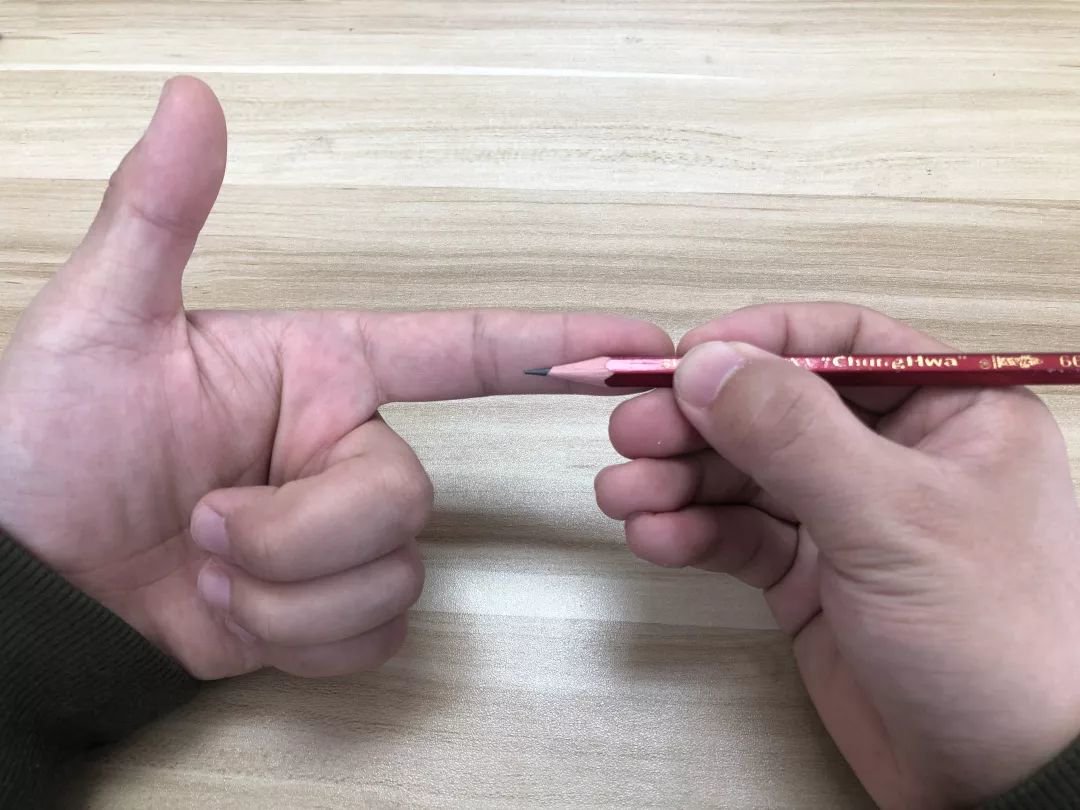
Common Pen Holding Mistakes (2): The Pen Holder Drops into the Tiger’s Mouth
The correct landing point of the penholder should be at the metacarpophalangeal joint of the right index finger, which is the highest bone of the right index finger.
Common Pen Holding Mistakes (3): Half-wrapping the pen with your thumb
The three-finger holding method requires: the thumb, index finger, and middle finger hold the pen barrel from three directions respectively. A common mistake is: half-wrapping the pen with your thumb pressing your index finger. To hold the pen correctly, there should be a gap between the thumb and index finger, and the thumb should be behind the index finger. Compared with the index finger and middle finger, the force exerted by the thumb should play a dominant role during writing.
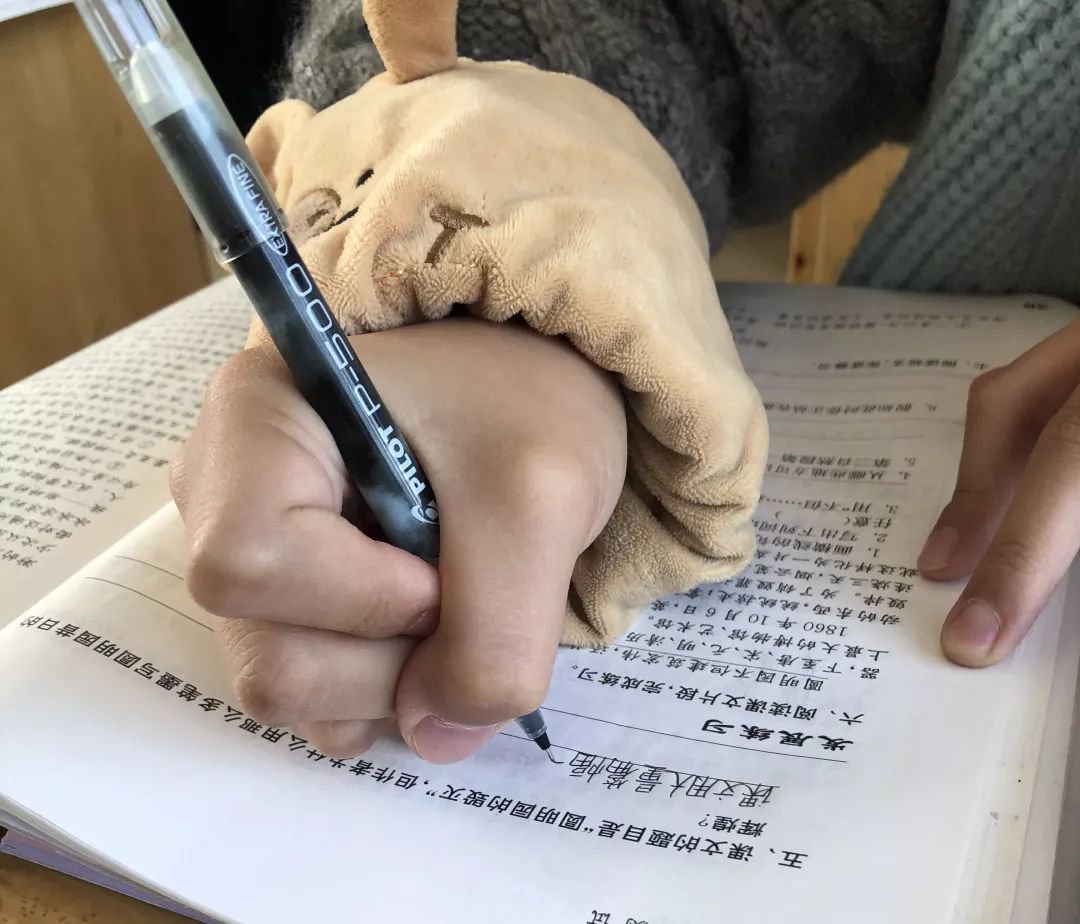
Wrong grip of the pen: half-wrapping the pen with the thumb, holding the pen in a low position
Common Pen Holding Mistakes (4): Thumb and Index Finger Extended/Inward
The correct way to hold a pen is that your thumb and index finger should form a fuller round shape. If the pen is stretched too far out, it will be olive-shaped or there may even be no space between the two fingers, resulting in a lack of effort in writing; if it is dug in too far, the pen will tend to be vertical, resulting in inflexible writing.
Common Pen Holding Mistakes (5): Concave/Protruding Index Finger Joint
The specific location of the index finger joint here is the distal interphalangeal joint of the index finger. A common mistake is that this joint is concave, that is, the first and second joints of the index finger are concave. In the process of children learning calligraphy, excessive use of the tip of the index finger may cause the distal interphalangeal joint of the index finger to be too prominent. During the teaching process, students need to be taught not to use too much force on their index fingers when writing, but to hold the pen firmly.
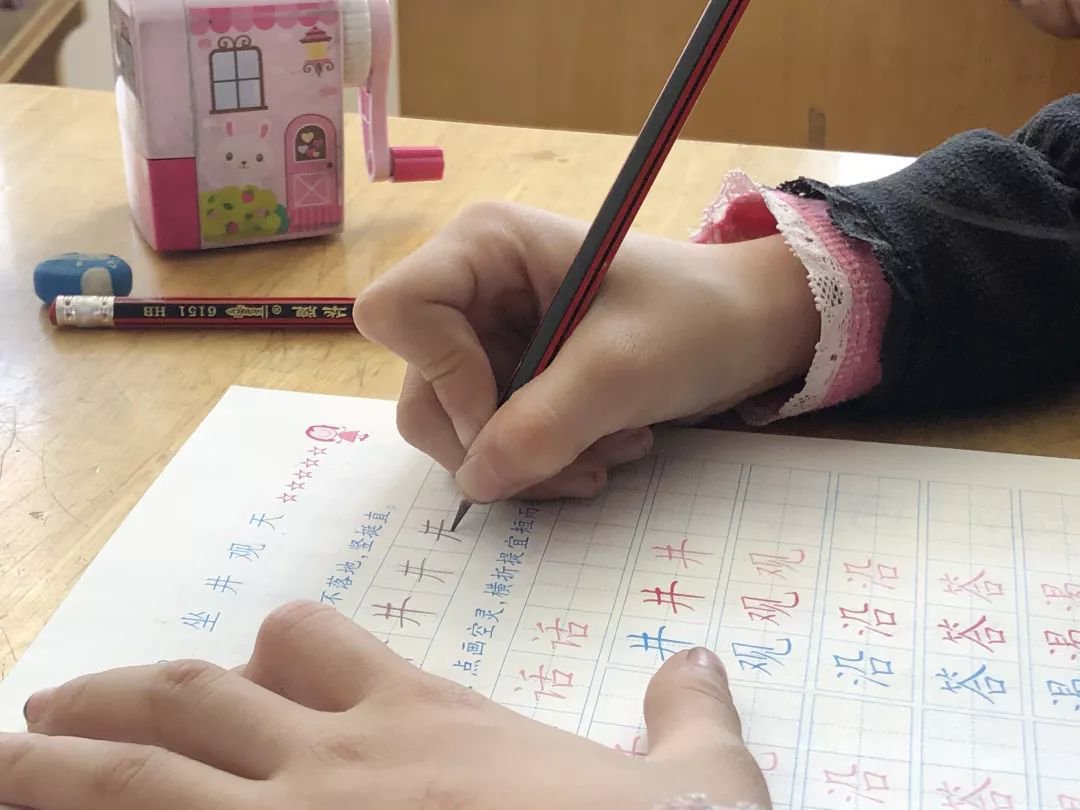
Errors in holding the pen: the index finger joint is concave, the pen barrel falls into the tiger's mouth, the pen is held in a low position, and the thumb is in front of the index finger
Common writing problems: Deep imprinting on the reverse side
This problem is very common in the homework of lower grade students. It is caused by not mastering how to use fingers and writing in the wrong way. The written requirement of Hao Kuai Calligraphy is "no trace", which means no imprints are left on the reverse side.
Common sitting posture errors (1): Head tilt
See Common Pen Holding Mistakes (1) here
Common sitting posture errors (2): Arm support
Support your upper body with your forearms and elbow joints. This incorrect posture can lead to a series of problems such as back curvature and shoulder retraction. Correction method: Both the left and right elbows are out of the table, and the right arm cannot be extended too far or slightly retracted, and the arms are asymmetrical.
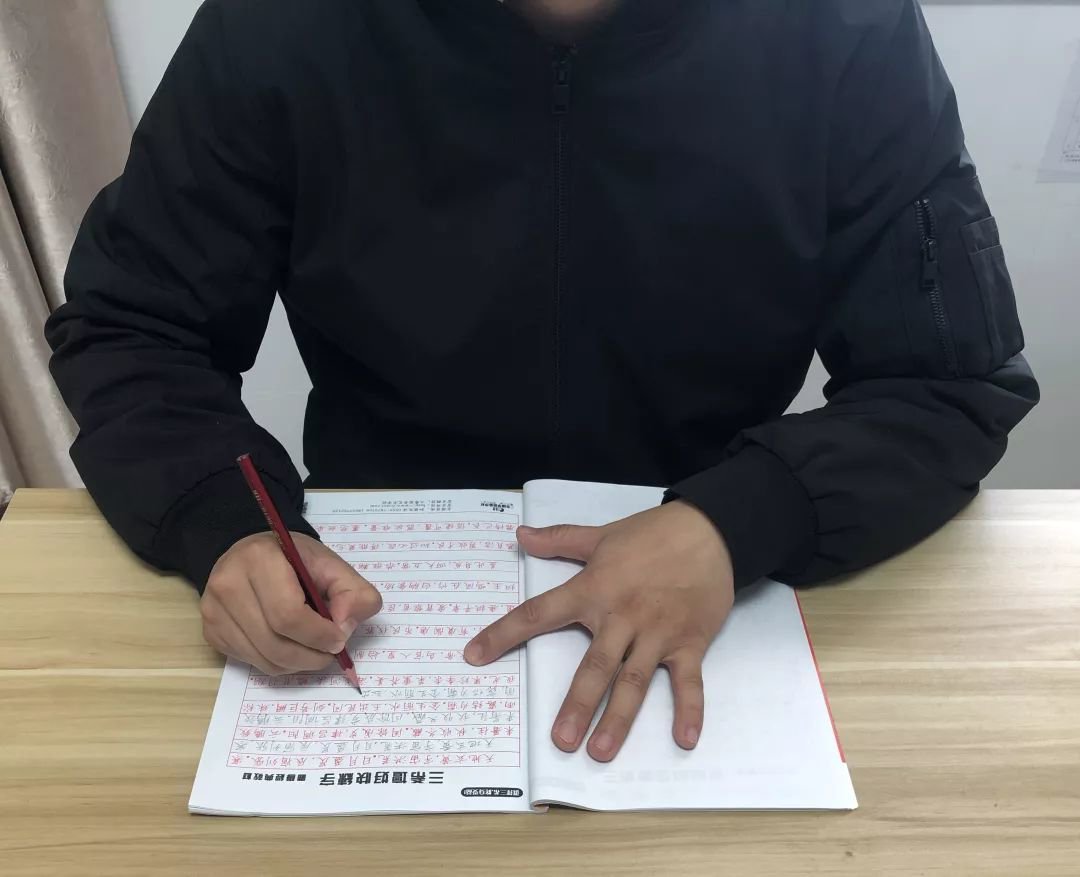
Common sitting posture errors (3): Curved back
The curvature of the back causes the face to be pressed against the textbook. In the long run, the eyes will suffer the most damage. It can be seen from the children around me that in the first grade, there were almost no students wearing glasses. By the second and third grades, there were already students wearing glasses. By the middle school, most students in the class had "four eyes"... The upper body should be made of The back is supported, the back is straight and slightly tilted forward, and the buttocks are firm and slightly tilted. The back movements are similar to the physical exercise method "squat", and students can be led to experience the squat movement during the teaching process.
Common sitting posture errors (4): Accommodate writing position and change sitting posture
Children tend to change their sitting posture to accommodate the writing position when writing. This needs to be emphasized to them: the notebook can be moved up, down, left, and right, but the posture cannot be changed! The writing position should be kept on the right side of the chest.
write after the question
In current children's education, Pinyin is generally learned in large classes in advance, and it is also at this time that children begin to learn writing.
After teaching practice, the author believes that when children first learn to write, it is relatively easy to master the sitting posture, but the more difficult thing to master is holding a pen. The main reason is that because children's physical and mental development is still in its infancy, it is difficult for them to control the correct position of their fingers when holding a pen. exert force, resulting in various pen-holding errors. Therefore, long-term coaching is required based on the correct writing method for holding a pen, and the method of exerting force must be gradually mastered in practice. Do not rush for success, as developing wrong pen-holding habits will outweigh the gains and losses. Of course, sitting posture cannot be ignored. It requires constant supervision and long-term persistence to lay the foundation for good and fast writing.
-END-








